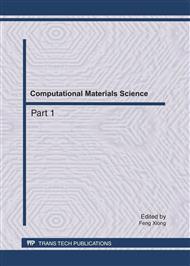p.1200
p.1205
p.1211
p.1216
p.1222
p.1228
p.1234
p.1239
p.1245
Analysis of the Feed Direction Burr in Turning Based on FEM
Abstract:
A finite element model was developed for simulation of feed direction burr formation process in turning. Based on a series of stress and strain contours the progressive change of geometry at the edge of workpiece edge from simulation, a turning feed direction burr formation mechanism is proposed and divided into four stages: normal cutting stage, deformation of workpiece edge stage, continues cutting stage and final developed stage. The removal of the remaining part of allowance takes place close to the tool tip as the material has sufficient rigidity to allow cutting only in this area in final developed stage and secondary burr will be formed; primary burr will be formed in final developed stage if the remaining material has no rigidity to allow cutting continually in final developed stage. The burr size and burr shapes form simulation results are consistent with the experimental results. Finite element model generated here provided a numerical analysis method to solve the prediction of burr formation and physical insight into the fundamental burr formation mechanism.
Info:
Periodical:
Pages:
1222-1227
Citation:
Online since:
July 2011
Authors:
Keywords:
Price:
Сopyright:
© 2011 Trans Tech Publications Ltd. All Rights Reserved
Share:
Citation:


